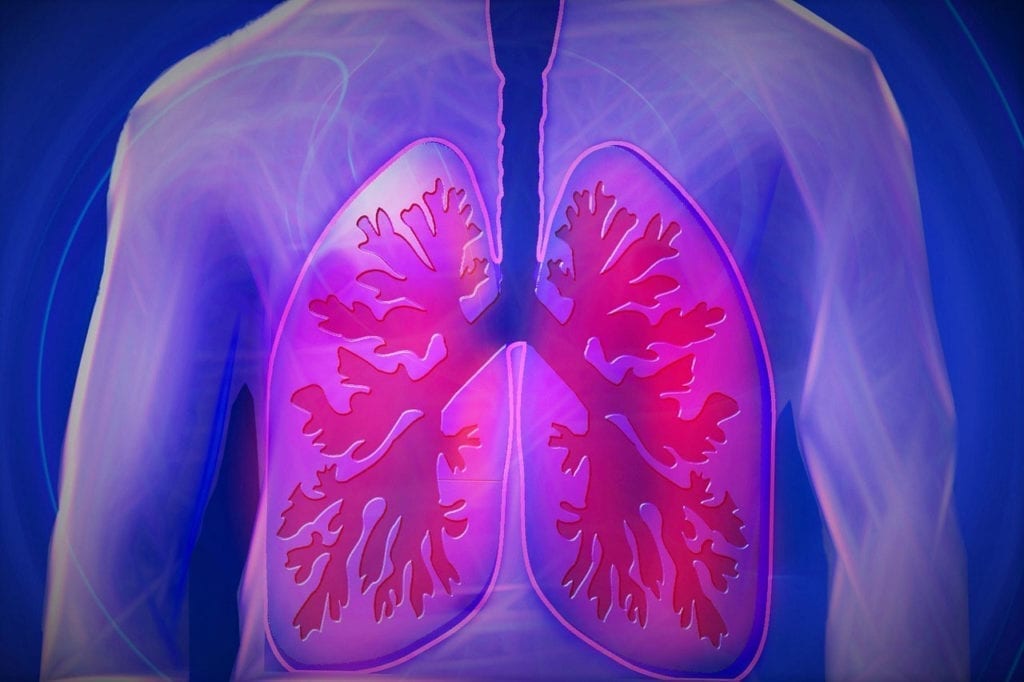Before you read on, don’t forget to check out Part 1 of Jennifer’s story. In Part 1, Jennifer shared her diagnostic journey and the four year stretch it took her to receive answers. Today, we discuss what chronic hypersensitivity pneumonitis (CHP) is, how Jennifer is doing today, and advice for others on this journey.
What is Chronic Hypersensitivity Pneumonitis (CHP)?
Chronic hypersensitivity pneumonitis (CHP) is a rare lung disorder that results from repeated inhalation of fungi and microbes, dust, chemicals, or other agents that the body has an allergic reaction to. As Jennifer explains:
“CHP is a type of allergy within the lungs which causes inflammation in the small air sacs called alveoli. While I’m not yet at this stage, CHP can lead to lung scarring. CHP causes a different immune reaction than pollen or pet allergies.”
While CHP can occur in people of all ages, it is most commonly diagnosed in people between the ages of 50-60. This condition may be misdiagnosed as symptoms overlap with other lung diseases. Symptoms can include:
- Shortness of breath and/or difficulty breathing
- Chronic cough
- Chest pressure and/or tightness
- Cyanosis (a bluish appearance to the skin)
- Fever and chills
- Fatigue and general malaise
- Unintended weight loss
- “Crackling” sounds while breathing
- Granulomas in the air sacs
In Jennifer’s case, she experienced a hacking cough that produced blood or mucus, unintentional weight loss of 10kg (approx. 22 lbs.) without trying, brain fog, headaches, a burning pain in the chest, shortness of breath, body pains, a hot feeling in the face, and oxygen levels that have dipped down to 77% at their worst. She shares:
“I felt like I really struggled whenever I moved, especially climbing stairs. Everything was just so hard to do. Although some of my symptoms have resolved, my voice was husky for some time due to extreme coughing. I still experience extreme fatigue. As soon as I wake up, I’m already terribly tired.”
Treatment Options
Treatment options for chronic hypersensitivity pneumonitis include identifying and reducing exposure to the allergen, corticosteroids, immunosuppressants, and supportive therapies like oxygen therapy. Researchers are also looking into investigational therapies such as pirfenidone or pulmonary rehabilitation therapy.
Throughout Jennifer’s journey, she has undergone several various types of therapy in an attempt to control her condition: weeks of prednisone, ongoing function tests, biopsies, CT scans, and near constant blood tests. While her doctors prescribed her Mycophenolate, she had to stop using this treatment after having reactions to it. However, Jennifer and her doctor are looking into a new medication called Azathioprine as a potential therapy.
Jennifer Today
Prior to Jennifer’s diagnosis, she worked in the healthcare field. She has since had to leave this role since she is now immunocompromised. This has been difficult, she says:
“I find it hard not working or having the social life I once had, since I need to be ultra-careful around other people. Life is interesting and I wake up each day trying to plan how I will push through and manage what I will do for that day.”
For now, Jennifer is doing okay, although she still experiences some shortness of breath and lung soreness. She has been eating healthy, using an air purifier in the bedroom, renovating the home, and the family has switched to using eco-friendly cleaning products in the house. Her nutritionist has placed her on a high protein diet and she also works with a GP to set up a care plan. Unfortunately, her beloved birds have had to be removed from the home until further notice.
No matter what happens, Jennifer knows that she has her biggest supporters behind her. She appreciates all that her GP, medical team, and lung specialist do for her. Her husband is always there to help and to talk. Jennifer’s cousin Kylie often pops over for a chat or lunch, and going out for lunch is a favorite activity for Jennifer and her sister-in-law Christine. And of course, we all love a good wine night—and Jennifer’s friend Melissa, who is also a tenant of theirs, is always up for a glass and a chat!
Jennifer may not know what tomorrow will bring. But she knows that she will continue staying as positive as she can.
Offering Advice
Ideally, the future of rare disease would focus on more education—for people and providers—and also the development of better therapeutics to not just treat, but cure, those affected.
Until that happens, Jennifer feels that she can make the most impact by sharing her story, raising awareness, and helping others to find community. She says:
“Many people feel that help isn’t available. But there is always help; you just need to know where to look for it. It’s also important to take care of your mental health. People may look fine on the outside, but it’s what’s inside that counts. You can make people aware of what you have and why you can’t do certain things, but always take care of yourself as well.”
How can you best take care of yourself physically and mentally? For this, Jennifer leaves everyone with a poignant bit of advice:
“Stay POSITIVE. Find the things that make you happy. Never give up. Find groups to talk with and have a good support group. Read as much as you can about your condition. Seek the best medical teams to help you. You know your body the best. If something doesn’t feel right, seek medical advice. Talk about it. And never feel silly asking for help.”







